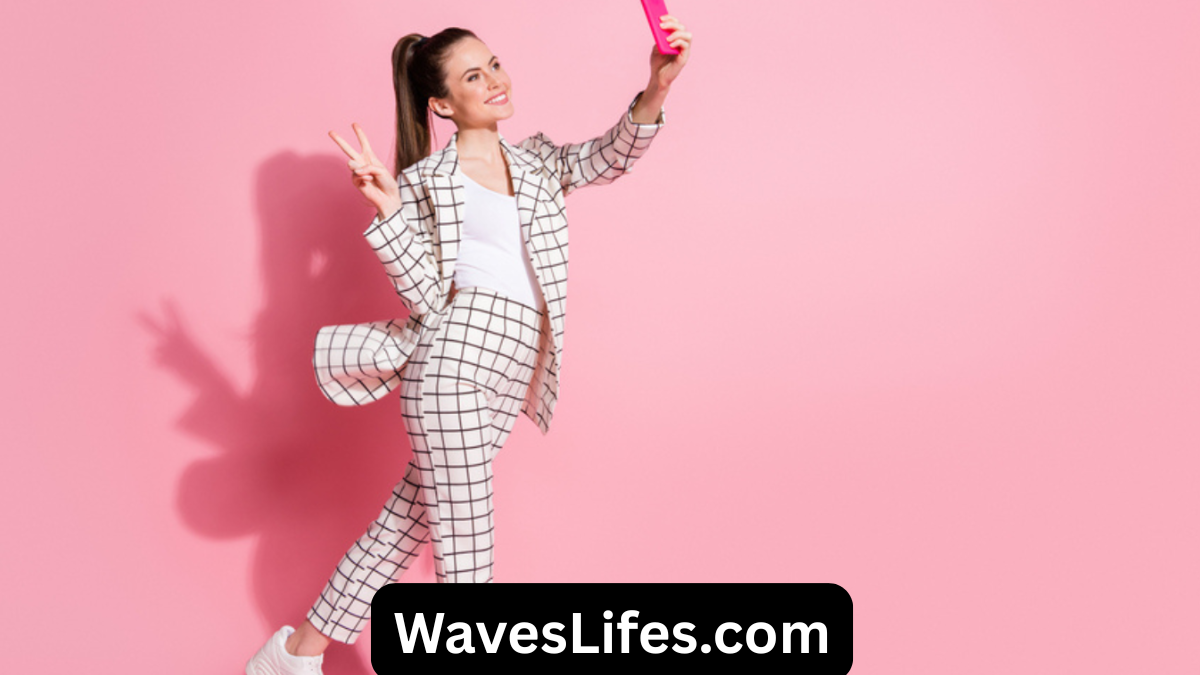Influemcers Gonewild The internet era has ushered in a digital revolution, where fame can be achieved with a single viral moment. One fascinating product of this era is the phenomenon often referred to as “influemcers gonewild” — a phrase that merges “influencers” with unpredictable or controversial behavior that grabs massive public attention. This digital spectacle is reshaping how society perceives fame, influence, and accountability.
The Nature of Modern Influence
Social media influencers are individuals who build a dedicated following on platforms like Instagram, TikTok, YouTube, and Twitter by sharing content that resonates with niche audiences. These influencers may start out as makeup artists, gamers, fitness trainers, or lifestyle bloggers. Over time, they become trusted voices and trendsetters. However, this power can sometimes spiral into unexpected territory.
When we talk about “gonewild” in this context, it does not necessarily mean lewd or adult content, though that can be a component. Instead, it can describe sudden behavioral shifts, shocking revelations, or controversies that take the internet by storm. Influencers who start out with a carefully curated brand may suddenly veer into scandal, often resulting in massive viral exposure and, in many cases, public backlash.
The Psychology Behind Shock-Based Virality
One major driver behind “influemcers gonewild” is the desire for virality. As competition for attention increases, some influencers resort to bold, outrageous, or controversial acts to stay relevant. This phenomenon is partly driven by the psychology of social media algorithms, which reward content that garners high engagement — regardless of whether that engagement is positive or negative.
Shock value has become a powerful tool in the digital playbook. Audiences are more likely to click, comment, and share controversial content, which in turn boosts visibility. In some cases, influencers intentionally manufacture drama or scandal as a growth strategy. While this can result in temporary fame spikes and media coverage, it can also damage credibility in the long term.
Impact on Audience Perception
The reaction to influencers “going wild” is mixed. Some audiences find their unpredictability entertaining, while others are quick to cancel or criticize them. The parasocial relationship between influencers and their followers plays a key role. Followers often feel personally invested in the influencer’s life and may feel betrayed when they act in ways that contradict their established image.
This shift also reflects how internet culture has evolved. The public now expects a certain level of transparency, authenticity, and responsibility from content creators. When influencers violate these unwritten rules, their audience often holds them accountable, sometimes with swift and severe consequences.
The Role of Social Media Platforms
Platforms like Instagram, TikTok, and YouTube are instrumental in both promoting and policing influencer content. Algorithms can amplify controversial content rapidly, allowing it to reach millions in minutes. At the same time, these platforms also have moderation policies and community guidelines, which means that extreme or offensive behavior can result in shadow banning, demonetization, or permanent account removal.
Yet, enforcement is often inconsistent. While some influencers face immediate consequences, others manage to thrive despite repeated violations. This disparity leads to debates about fairness, freedom of expression, and the responsibility of social platforms in curating online content.
Monetization and the Allure of Notoriety
Going viral, even for controversial reasons, can be extremely lucrative. Influencers who “go wild” often see spikes in follower counts, media attention, and brand interest. Even negative publicity can increase visibility, attracting opportunistic brands that are more interested in reach than reputation.
Some influencers monetize controversy directly by launching OnlyFans pages, releasing merchandise, or signing exclusive content deals. In fact, the blurred line between fame and infamy has become a key part of the influencer economy. Not all brands shy away from controversial figures; some use them to target edgy, bold marketing campaigns that would not succeed through traditional channels.
Notable Examples in Pop Culture
There have been numerous high-profile examples of influencers veering off the expected path, from viral stunts gone wrong to full-blown scandals. These instances often dominate headlines, spark debates across online forums, and even inspire academic discussions on digital ethics and influence.
What distinguishes many of these cases is how they reflect broader societal issues — whether it’s the commercialization of personal identity, the exploitation of mental health struggles for views, or the tension between authenticity and performance. These stories become symbolic of the challenges inherent in a fame-driven digital ecosystem.
The Thin Line Between Performance and Reality
Many influencers blur the line between their online personas and real lives. This often creates confusion about what is genuine behavior and what is strategic performance. When influencers “go wild,” it may be a form of digital theater intended to provoke, amuse, or shock. However, it can also be a genuine expression of emotional breakdowns or personal crises.
This ambiguity fuels viewer engagement. The audience becomes part of an ongoing narrative, speculating, reacting, and dissecting every move. In essence, the influencer’s life becomes a form of participatory entertainment — reality television for the digital age.
Ethical Dilemmas and Responsibility
The growing trend of influencers engaging in outrageous behavior for views raises serious ethical questions. Should influencers be held to a higher standard because of their public platform? What responsibility do platforms and brands have in discouraging toxic behavior?
There is also the issue of age and impressionability. Many followers are teenagers or young adults who are still forming their values and perspectives. Influencers, whether they like it or not, serve as role models. Their choices can normalize harmful behaviors or promote unrealistic expectations of success, fame, and body image.
Cancel Culture and Public Reckoning
Influencers who cross a certain line often face public reckoning. Cancel culture — the collective withdrawal of support from public figures due to problematic behavior — has become a defining feature of online discourse. In some cases, this leads to accountability and change. In others, it can be punitive and disproportionate.
However, cancel culture is not a guaranteed consequence. Many influencers rebound quickly, either by rebranding, apologizing, or moving to other platforms. Some even build entire careers off being controversial, thriving in niches where edginess is valued over ethics.
The Role of Media Coverage
Mainstream media has played a major role in amplifying influencer controversies. Sensational headlines, interviews, and viral news cycles further cement the fame of those who have “gone wild.” These stories often become symbols of a cultural shift, sparking broader debates on youth behavior, internet addiction, and the modern definition of celebrity.
Moreover, traditional media often treats influencer scandals with a mix of curiosity and disdain, creating a feedback loop in which digital drama spills into mainstream conversations and vice versa. This cross-platform engagement fuels the longevity and impact of the “gonewild” phenomenon.
Long-Term Consequences for Influencers
While going viral for wild behavior can lead to short-term success, the long-term consequences can be severe. Burnout, reputational damage, legal trouble, and loss of genuine followers are common outcomes. The high of going viral often gives way to the low of public scrutiny and personal instability.
Some influencers eventually express regret for their actions, sharing behind-the-scenes realities of anxiety, addiction, or isolation. These stories reveal the psychological toll of maintaining a controversial online persona, especially when real-life support systems are lacking.
A Mirror to Society
The phenomenon of “influemcers gonewild” is not just about individuals behaving badly. It reflects larger societal trends — the hunger for fame, the power of digital spectacle, and the shifting norms of public behavior. It raises questions about what we value, who we idolize, and how we interact in virtual spaces.
This cultural mirror forces us to examine our role as consumers of content. Are we enabling problematic behavior by rewarding controversy with attention? Or are we holding public figures accountable in an age where influence can shape minds and movements?
Navigating the Future of Digital Influence
As the influencer economy continues to evolve, it is likely that the “gonewild” trend will persist. However, the growing awareness around mental health, ethics, and media literacy may gradually influence both creators and audiences to pursue more mindful engagement.
New platforms may arise that prioritize authenticity over virality. Audiences may begin to support creators who focus on positive impact rather than shock value. At the same time, education on digital citizenship can empower users to critically evaluate the content they consume and share.
Ultimately, the future will be shaped by the collective choices of influencers, platforms, brands, and audiences. Whether “influemcers gonewild” becomes a cautionary tale or a blueprint for fame depends on how society chooses to engage with digital culture moving forward.
Frequently Asked Questions (FAQs)
What does the term “influemcers gonewild” mean?
It refers to influencers who act unpredictably or controversially online, often diverging from their normal content to gain attention or spark discussion. The Influemcers Gonewild behavior may include scandals, offensive remarks, wild stunts, or shifts in persona.
Is the term related to adult content?
Not necessarily. While the phrase may sound suggestive, in the context of digital culture it more broadly refers to unexpected or controversial behavior, not limited to any particular type of content.
Why do influencers behave this way?
Many influencers are driven by the need for engagement, visibility, and monetization. Outrageous behavior can increase views, followers, and income. In some cases, it may also stem from personal struggles or emotional instability.
How do audiences typically respond?
Reactions are mixed. Some fans are entertained or supportive, while others express disappointment or withdraw support. In extreme cases, influencers may be “canceled” or face widespread criticism.
What are the consequences of such behavior?
Short-term gains can include viral fame and financial benefits. Long-term consequences may involve reputational damage, mental health issues, and loss of credibility or career opportunities.
Can influencers recover after going wild?
Yes, many influencers successfully rebrand or rebuild their careers. This often involves apologies, image overhauls, or platform changes. However, recovery depends on the severity of the incident and public perception.
Are social media platforms doing enough to control this?
Enforcement varies. Some platforms take strong action against policy violations, while others are less consistent. The effectiveness of content moderation is a topic of ongoing debate.
What can be done to curb this trend?
Promoting digital literacy, supporting ethical influencers, and holding platforms accountable for their role in content amplification are key strategies. Educating both creators and consumers can help shift focus away from controversy and toward meaningful engagement.




